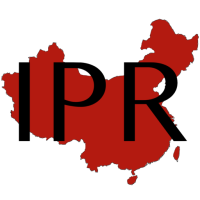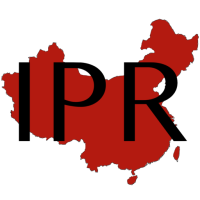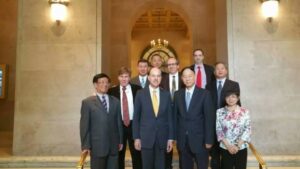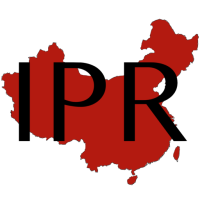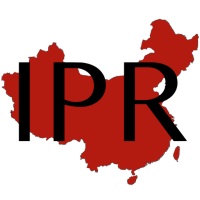In the era before computers and the Internet, an electric typewriter was the leading technology for preparation of formal documents. The leading manufacturer of sturdy and responsive business typewriters was IBM. I learned to type in 8th grade, from the moms of my classmates who volunteered to work with us. My mother was also both a stenographer and skilled typist, and we would sometimes compete with each other at home for speed and accuracy. Other family members worked in telegraphy. Typing and transcription was an important labor-intensive part of the US economy.
Development of typing technology had important IP-related implications. Typing on paper was one method of fixation “in a tangible form” of content that would satisfy United States copyright law requirements. In addition, there were numerous competing technologies and designs for typing, typewriters and electronic transmission of documents, among them the Morse code, the telegraph and early facsimile machines Most Americans at that time also had little understanding of China or the Chinese language. It was not uncommon for people who understood very little of Chinese to inquire “well, how do they type?” Typing was essential, China was a mystery, and implicitly the inability to easily type was holding back China’s development.
A Stanford University professor, Thomas Mullaney, wrote a book on the development of the Chinese typewriter and its implications for communications, in 2017. Most recently he published a remarkable article on Lois Lew, the improbable Chinese woman who mastered that early, 5400 character IBM Chinese typewriter and demonstrated it to the world in the 1940’s.
Wikipedia notes that there have been dozens of variations of Chinese typewriters beginning with other inventors in the early 1900’s. Lin Yutang, the well-known scholar, popular author and first President of my Chinese language alma mater (Nanyang University 南洋大学 in Singapore), also invented a Chinese typewriter. He obtained a US patent on it, No. 2,613,795 (1946). The Chinese typewriter that Lew used was a slightly earlier invention of Kao Chung-chin of New York in the 1940’s.
Based on public data, Kao appears to have been born in 1906, and was a resident of Forest Hills, NY. He was naturalized as a US citizen in 1955. Coincidentally, the stenographers and telegraph operators of my family also hailed from Forest Hills. It may have been an early form of the kind of ethnically diverse technology “clustering” that has characterized New York’s technology developments in the last decade. In any event, I would like to think so.
One of Kao’s patents discloses a Chinese language typewriter wherein a keyboard of approximately 36 keys controls the coordinate selection and printing of any one of 6000 different Chinese characters or ideographs, USPN 2,412,777 (1944). A somewhat earlier patent describes a keyboard-controlled ideographic printer having permutation type selection USPN 2,427,214 (1943). A diagram from one of his patents is pictured above.
Kao was also the named inventor on other patents, including a meteorological recording machine and apparatus USPN 2,408780A (1944) a copy holder for stenography USPN 2617386A (1949), a Japanese language telegraph printer USPN 2,728,816A (1953), and an automatic egg roll machine USPN 3,633,517A (1967). The last invention, if it is indeed his, seems to me to have been a sad concession to the economic challenges of manufacturing and marketing a complex Chinese electronic typewriter and other complex electro-mechanical devices.
It is well known that movable type was Song dynasty technology that generally proved too cumbersome to replace woodblock printing due to the complexities of Chinese ideographs. However, the technology proved highly useful to Western alpha-numeric printers. Similarly, the cumbersome technology of Kao and his other Chinese typewriter inventors had a lasting impact on modern word processing technology. Prof. Mullaney has suggested that the development of modern Chinese typewriters in the 1960s and 1970s influenced the development of modern computers through predictive typing technologies of most frequently used phrases and characters. Chinese typewriter engineers were trying to make the most common characters accessible at the fastest speed possible through predictive technology, which helped overcome the otherwise cumbersome methods of assembling over 5,000 individual characters through multiple keystrokes. Today, nearly everyone uses predictive technologies to input alpha-numeric messages on their cumbersome cell phone alphanumeric virtual keyboards.
Kao joins my expanding “hall of fame” list of enterprising early Chinese innovators who filed patents in the United States.
Source: http://chinaipr.com/2021/05/21/the-forgotten-chinese-pioneers-of-the-predictive-keyboard/
- 000
- among
- business
- China
- chinese
- code
- Common
- Communications
- computers
- content
- copyright
- data
- Development
- Devices
- documents
- Early
- Economic
- economy
- Electric
- Engineers
- Event
- expanding
- family
- First
- forgotten
- Free
- Hills
- Home
- How
- HTTPS
- IBM
- Impact
- Including
- innovators
- Internet
- IT
- keys
- language
- Law
- leading
- learned
- Manufacturer
- manufacturing
- Marketing
- Members
- MIT
- mother
- New York
- NY
- Other
- Paper
- patent
- Patents
- People
- phrases
- Popular
- president
- public
- Requirements
- Roll
- Share
- Singapore
- So
- speed
- stanford
- Stanford university
- States
- storage
- Technologies
- Technology
- time
- United
- United States
- university
- us
- US economy
- Virtual
- WHO
- Wikipedia
- woman
- WordPress
- Work
- world



